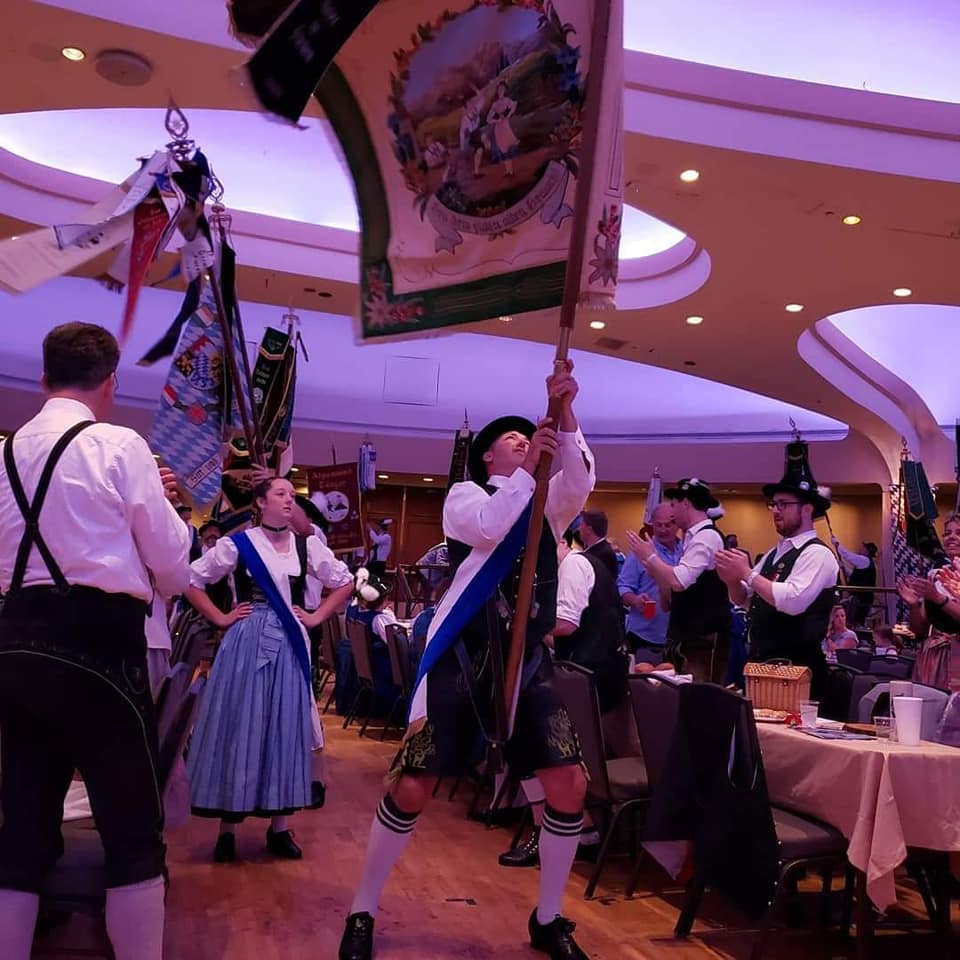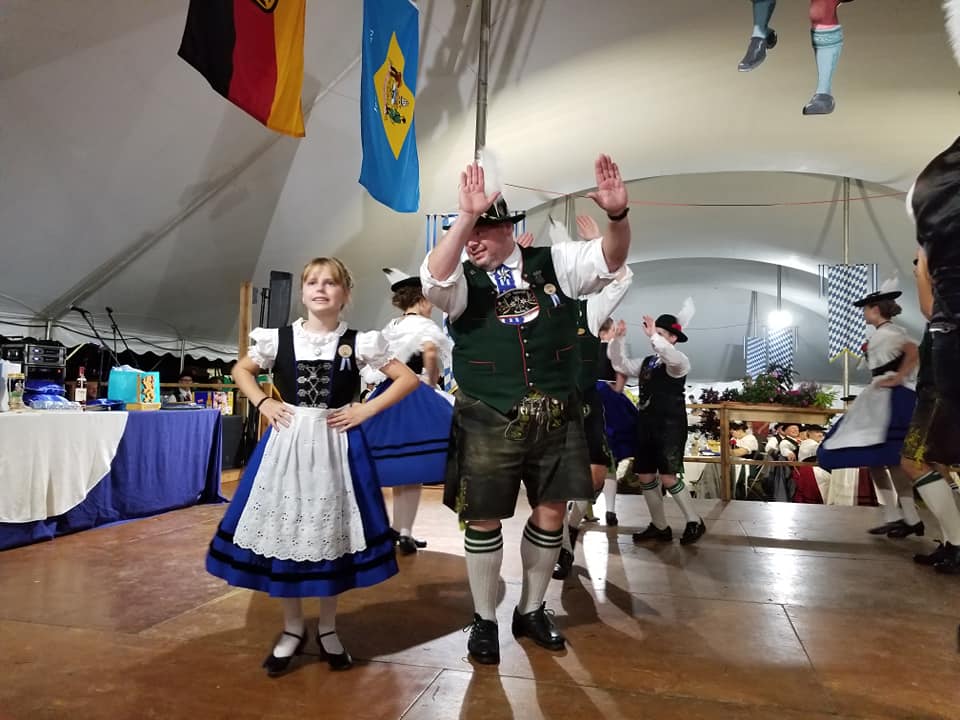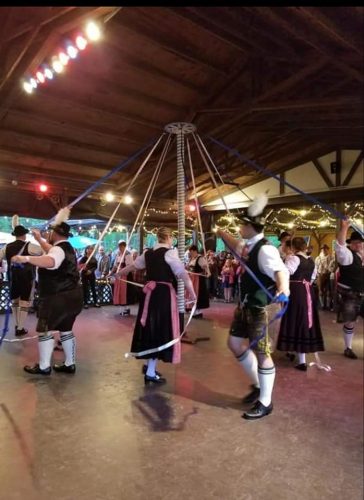Gebirgs Trachten Verein Edelweiss, Reading
Mission Statement
The Gebirgs Trachten Verein Edelweiss, Reading was founded with a commitment to fostering Bavarian Traditions, customs, culture and dress; to provide fellowship for members and friends; and to preserve and teach these traditions to present and future generations.

Mission Statement
The Gebirgs Trachten Verein Edelweiss, Reading was founded with a commitment to fostering Bavarian Traditions, customs, culture and dress; to provide fellowship for members and friends; and to preserve and teach these traditions to present and future generations.
How we got here
It was in February 1947 that Benno Hoerl and Joseph Flock of the Reading Liederkranz thought it necessary to organize a group that would give purpose and direction to the younger members of the Liederkranz. This group of young adults, ages sixteen to twenty-two, would preserve the customs and traditions of their Vaterland. With much effort, the Gebirgstrachten-Verein Edelweiss began to form.
With the help of Alois Sager, who had danced with a Trachten group in Germany, and Norbert Knott, who provided accordion accompaniment (and still does today), the recruiting program gained momentum. The young people welcomed the fledgling organization with open arms. After just a few days, nineteen girls and thirteen boys had signed up. Mrs. Elsie Koehler, a dressmaker, volunteered to make the girls’ first costumes.
Alois held the first practice sessions every Saturday afternoon for two hours. This practice organized the energetic dancers who, after a constructive period of sessions, were eager for contact with other established Schuhplattler groups.
GTV Almrausch Philadelphia
Benno Hoerl contacted GTV Almrausch of Philadelphia, Pennsylvania, to request its assistance in instruction and guidance. Almrausch agreed to teach the young dancers and to help them with their repertoire. For the next six months, Almrausch made the one-hundred mile round trip to Reading every Sunday to extend the hand of camaraderie.
In 1949 the first election was held, and there the Gebirgstrachten- Verein Edelweiss was born. Frank Kasprowicz was the first president, his brother Alfred the first Vorplattler. Honorary life memberships were bestowed upon the following for their instrumental help in organizing the group: Joseph Flock, Benno Hoerl, Alois Sager, Norbert Knott, and Hans Goetz.
After only one year, in 1950, the proud group was able to purchase its flag due to the financial support of Albert Walschburger. Benno Hoerl went to Germany to bring the flag back to Reading. On May 5, 1951, GTV Edelweiß held its Fahnenweihe at the Rajah Temple on North Sixth Street in Reading, Pennsylvania. The day was made a total success by the participation of ten visiting dance groups. GTV Almrausch Philadelphia became our PatenVerein. Father Wachter blessed the flag; Mrs. William Findeisen was the Fahnenmutter; and Eleanore Findeisen and Rosmarie Holzapfel were the Fahnenjungfrauen.
During the 1950s the group’s proficiency grew to a confident level when they participated in various Preisplatteln. One competition was in 1953 in New York City, sponsored by Schlierachtaler Stamm during their twenty-fifth anniversary celebration. We won second prize in group competition, and Henry Koehler and Fritz Hierl won the second and third prizes in individual competition. Another was on June 28 through 30, 1958, in Buffalo, New York, during Edelweiss Buffalo’s twenty-fifth anniversary. Our six couples managed to capture third prize dancing the “Fritz Wendler,” competing against eighteen, more experienced groups. The group has not entered Preisplatteln since, but we are now looking forward to the time we can again participate.
In the early years, GTV Edelweiss boasted many musicians, and we even had a zither group. One group of musicians, known as the “Edelweiss Kapelle,” survived and now travels on its own, playing all over Pennsylvania and nearby states. The Kapelle thrives under our accordion player and their Kapellmeister, Norbert Knott. The Kapelle has even toured and played in Germany and Austria.
In 1968 we approached the German School of Reading Liederkranz, hoping to attract youngsters into the dance group. This approach was an immediate success for it not only attracted children but also their parents. Ernst Licht volunteered to teach the new children’s group, which continued to grow to more than thirty dancers. Through the next few years this children’s group matured into a youth group, and some of the dancers were eventually inducted into the adult group. Although some let their interest wander, at least half a dozen couples made the transition. On July 7, 1969, we became members of the Gauverband In January 1968 Joseph “Sepp” Pichler and his wife Hilde returned from a three-year stay in Germany where he had become 2. Vorplattler of the Bergbund Würzburg Schuhplattler Gruppe. He was immediately named 1. Vorplattler of our group, and he introduced us to a new and more formal style of Plattln. With his guidance, the group began to grow into a well-organized troupe of dancers with a large number of children.
Friendship with Enzian Volkstanzgruppe Delaware
In 1969 a number of dancers traveled from Delaware to Reading every Friday night. They took the newly learned Schuhplattler back to their club in the Delaware Sängerbund and added them to their repertoire of folk dances. They were dancers of the Enzian Volkstanzgruppe, and we became their PatenVerein. We still maintain a very close relationship and never miss a trip to Delaware for their annual Stiftungsfest.
In 1979 the group, under the direction of the present 1. Vorplattler Robin P. Pritz, entered a new era. Robin, a veteran of the children’s group and then the youth group and 2. Vorplattler from 1976 to 1977, recruited new and inactive members and convinced them that if we all united, we could build this group to an all-time high. With the recruiting program in full swing, the group enjoyed an influx of new young dancers. They pledged their support; and the group has thrived harmoniously, emerging as a close-knit group whose members are mindful of the ideals of their founders.
In 1999 G.T.V. Edelweiss celebrated its 50th Anniversary and Flag Rededication. Groups from all over the United States and Canada came to Reading to help us celebrate. There where 28 clubs represented with over 750 Trachtlers in attendance. There was an authentic Fahnenweihe at St Peters Church at 322 South 5th Street in Reading with a parade and a performance of the Gauplattler by all dancers at 5th and Penn Streets in the heart of Reading. This was one of the best attended Verein Anniversaries in North America.
In 1949 the first election was held, and there the Gebirgstrachten- Verein Edelweiss was born. Frank Kasprowicz was the first president, his brother Alfred the first 1.Vorplattler. Honorary life memberships were bestowed upon the following for their instrumental help in organizing the group: Joseph Flock, Benno Hoerl, Alois Sager, Norbert Knott, and Hans Goetz.
After only one year, in 1950, the proud group was able to purchase its flag due to the financial support of Albert Walschburger. Benno Hoerl went to Germany to bring the flag back to Reading. On May 5, 1951, G.T.V. Edelweiss held its Fahnenweihe at the Rajah Temple on North Sixth Street in Reading, Pennsylvania. The day was made a total success by the participation of ten visiting dance groups. G.T.V. Almrausch Philadelphia became our PatenVerein. Father Wachter blessed the flag; Mrs. William Findeisen was the Fahnenmutter; and Eleanore Findeisen and Rosmarie Holzapfel were the Fahnenjungfrauen.
In the late 1980’s the flag was damaged from a water leak in the old Reading Liederkranz clubhouse. The flag was sent back to Fahnen Kossinger in Germany, the original manufacturer of the flag, for repairs. As G.T.V. Edelweiss approached its 50. Jubiläum in 1999 it was learned that the repairs had been extensive enough to warrant a new Fahnenweihe, rather than just a rededication of the flag as originally planned. So on September 4, 1999, as part of its 50. Jubiläum celebration, G.T.V. Edelweiss again held a Fahnenweihe. This time it was held at St. Peter’s Roman Catholic Church on Fifth Avenue in Reading with Father Kuzman officiating. Our PatenVerein, G.T.V. Almrausch of Philadelphia, was there as was our Patenkind, Enzian Volkstanzgruppe of Newark, Delaware. Inge Weiss became our Fahnenmutter; Fahnenbände were also presented by our Kindergruppe and the associated clubs at the Reading Liederkranz. The 50. Jubiläum mit Fahnenweihe was attended by 600+ Trachtlers from Canada, Texas, Maryland, Delaware, Pennsylvania, Virginia, Washington DC, New York, Connecticut, and Germany.
See us preform at the Reading Liederkranz Oktoberfest
Dance Repertoire
Schuhplattler Dances
Ammerseer
Andorfer
Bömisch Grenz
Chiemgauer
Dirndl mit’m Rot’n Mieder
Fockastoana
Fritzwendler
Gauplattler
Haitauer
Haushamer
Isartaler
Reit im Winkl
Schnacklwalzer
Sternpolka
Überall san d’Lad’n zua
Watchenplattler

Occupational dances
Bankltanz
Bergknappentanz
Bergvagabunden
Goaßlschnalzen
Rheinländer
Mühlradl
St. Gilgen Figurentanz
Steirer Figurentanz

Events
Get in touch
P.O. Box 15019
Reading, PA 19606
1st, 2nd and 4th Friday’s
Children: 8:00 – 9:00
Adults: 9:00-10:00